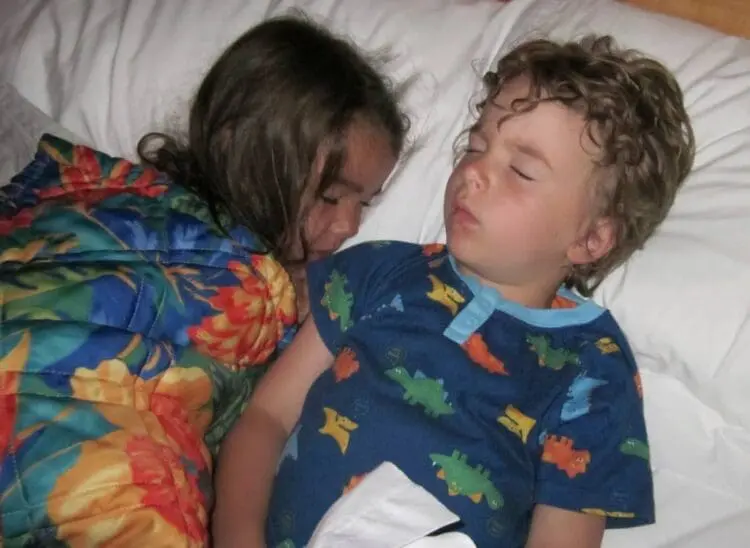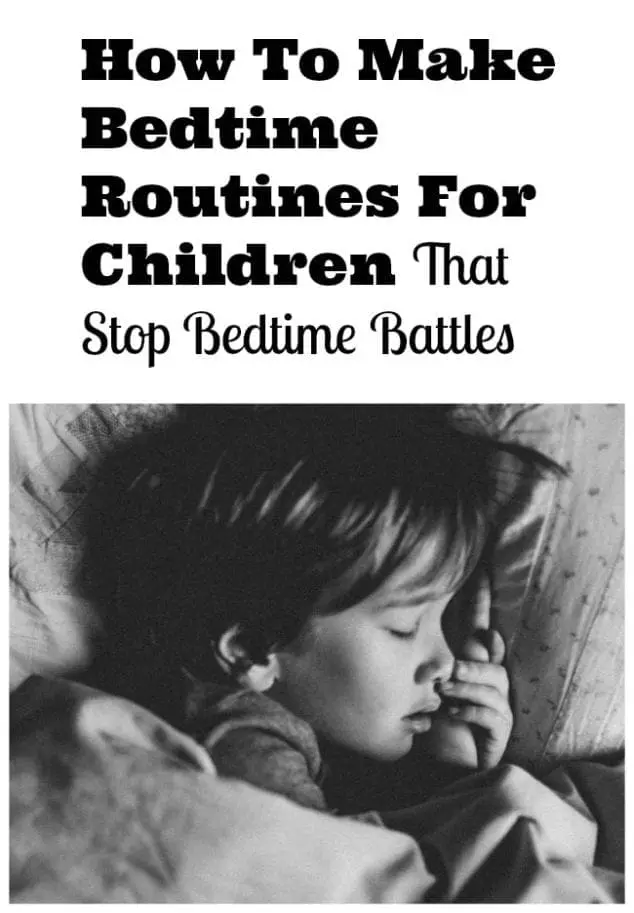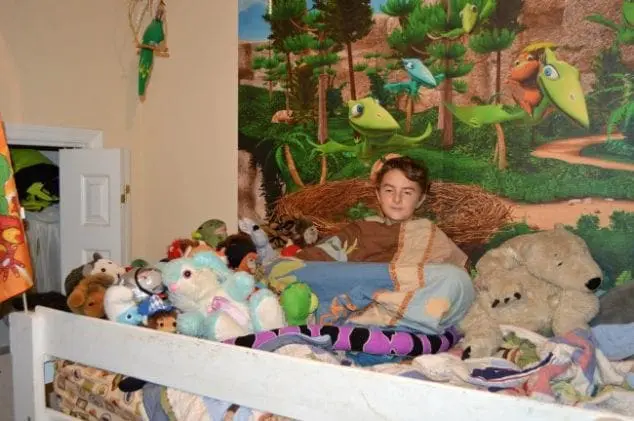One of the common issue that parents have is getting young children to sleep without getting into a power struggle. I know this can be difficult, but there is a way to make the toddler bed time go more smoothly. The best way to stop bedtime battles is to have clearly communicated bedtime routines for toddlers that you practice every night. Here is how and why to make a toddler bedtime routine and stick to it. This article is full of great advice plus it contains a bedtime routine chart free printable that makes it easier for young kids and parents to adopt these new rituals.
When your child reaches a certain age, the entire sleep process may suddenly become problematic. It sometimes feels as if your toddler who could feel asleep anywhere, has been replaced by a little monster who refuses to sleep. This happens for a number of reasons, but one of the most common causes of toddler sleep problems is that the child is testing boundaries to see what they can get away with.
Why is a good bedtime routine important?
The fact is, bedtime routines are a good idea for children of all ages, from from toddlers to teens. Even we adults benefit from consistent bedtime routines where the body knows just what to expect. However, toddlers seem to fight bedtime the hardest and these tips are particularly useful for creating an easier bedtime for toddlers. It is important to create a healthy and consistent bedtime routine for toddlers so it becomes a habit that they can maintain as they grow older. A child’s bedtime routine sets them up for success the next day by ensuring they are well rested. Here are five tips to help you establish a toddler sleep routine that works for your child.
7 Tips To Establish A Toddler Bedtime Routine
The first step to handle any sleep problems is to ask yourself: “What is the real reason my child doesn’t want to go to bed?” This is an important step for toddlers to teens! For children, there are many reasons, including fear of the dark, eating too many sugary foods too close to bedtime, fear of being alone, or wanting to stay up with the older family members. Teens will often resist going to bed because they claim they aren’t tired, want to use the computer or phone, want to feel in control or want to set their own bedtime. Knowing the reason behind the behavior can help you address it in the best way.
The secret to regular bedtime routines is making them regular! In other words, having a plan and sticking to it as much as possible. Create a clear sleep schedule that ensures toddlers get a minimum of 10 hours of sleep each night. Make sure everyone in your household is on board with the plan. Here are seven tips to establish healthy sleep habits.

1. Prepare the Sleeping Space
The bedroom is a place for sleeping only. Your child needs to recognize this so that they can make a mental association between the bed and sleep. Try to keep the space clutter free and peaceful. Dark curtains can help create a toddler sleep routine. Also, if they are afraid of monsters or the dark, encourage them to look over the room once with you before they go to bed. This will make them feel responsible for their safety, and convince them that nothing untoward is going to happen during the night.
2. Remove electronics from the bedroom.
Under no circumstances should a young child have access to a television or video game console in their room. If your child or adolescent is cranky because you’ve allowed them to play video games, surf the net or watch TV in their room at night before bed, then it’s time to have a discussion with them. You will need to limit their screen time before bed. It has been shown electronics before bedtime do not put the mind in a restful state. Avoiding electronics for an hour before bed to key to stop toddler bedtime battles.
3. Establish quiet time before toddler bed time.
To stop toddler tantrum bedtime battles, your child can relax in their room for 30 minutes before they must turn the lights off. Older kids can have an hour or whatever you feel comfortable with. During this time they can read to themselves or do a relaxing activity that you choose together such as massage or a bedtime story. The goal of quiet activities is to help them wind down and ease into bedtime. My son likes to arrange all of his stuffed animals just so and then read to himself. When he was younger I read to him.
4. Establish certain bedtime rituals.
Establishing rituals with kids is very important, and can be very helpful in getting them to sleep. Reading bedtime stories to your young child before he or she sleeps each night is a ritual you can do that has secondary benefits, because it will get them interested in books. You might also give your child a soothing drink before bedtime, like warm milk or chamomile tea. Then they can brush their teeth and floss as the next part of their ritual. They might also enjoy a relaxing you using a little essential oils sleep recipe and a little back rub. Or a warm bath is another relaxing choice for the perfect bedtime routine. Turning on a sound machine before you leave the room may be helpful to some children. A stuffed animal or soft music are also popular choices.
5. Have your child set their own alarm clock.
Not all children are able to do this on their own, so parents of toddlers can do this with them as part of a positive bedtime routine. Setting their own clock (with you) will help them gain a sense of responsibility and time management. It helps toddlers understand they have to go to bed because the clock says it is time and that they can get up in the morning when the clock says it is time. They have to have enough sleep to grow big and strong. Toddlers love that! They may also like a motion activated nightlight so they can get up to go to the bathroom easily.
6. Maintain Routine (Use This Bedtime Routine Chart Free Printable To Help)
The trick to getting your child to sleep easily is to get them into a rigid routine. If you can have them bath or shower, brush their teeth, and then go to bed at the same time every night, then their internal clocks will start adjusting accordingly, so that by the time they go to bed, they fall right asleep. Disruptions are likely to lead to sleepless nights for the both of you. Stick to your toddler bedtime routine as much as possible. That is what makes it a routine and allows the child’s body to recognize bedtime.
Use this printable bedtime routine chart pdf for toddlers to help them maintain the routine. Just pull the image onto your desktop and open it, then use file to select print. You can slip into a clear plastic bag or use a glass frame and have them use a dry erase marker to check it off each night. You can give them a sticker for night they maintain the routine.

7. Give positive reinforcement.
When your child or teen is able to go to bed without fighting you, be sure to praise them for their accomplishment. It’s always important to catch your child being good, and any time you can say, “Great job,” it helps them feel positive about their behavior. If you toddler is enjoying their quiet time you can say, “Wow, you are really acting like a big boy (or girl). I am so proud of the way you are looking at books quietly to get ready for bed.”
How To Enforce The Toddler Night Time Routine
It is natural that at some point your child is going to push against the boundaries of your authority, and when they are young, the first point of fracture seems to be bedtime. Mom and Dad are both tired themselves, and tend to let the child get away with slightly more than they ordinarily would. Resistance can come in the form of a facial expression, attempts to play, or temper tantrums. Once again, the routine is the tool that can empower you to avoid tears and frustration.
Set the toddler bedtime routine, place your child in the bed, and say goodnight. If they get out of bed, gently tell them that it’s bedtime and that they need to sleep. If they get out again, return them without talking. Repeat this process and take them back every time without a word. They will soon learn that it is pointless to fight, and that they are exhausted as you are. Persevere and you will be sleeping peacefully, as will your children.
This tactic of holding children accountable to the bedtime routine is important for toddlers, kids, and teens. For instance, if your child is waking up late and missing the bus, make it clear that this behavior is unacceptable. Sit down with him and calmly ask him why he thinks the situation isn’t working and what he can do to fix it. Help him understand that it’s his responsibility to hold up his end of the bargain. You’ll have to set an earlier bedtime or revoke electronics privileges until his behavior improves. When he shows he can be responsible, then you’ll let him try a later bedtime. Don’t give in if he puts up a fight or throws a tantrum! I know it’s hard for parents when their children resist. Make it clear to the child that he has the chance to earn his privileges back.
Toddler Bedtime Conclusion
Following these tips to set a calming bedtime routine will help defuse the bedtime power struggle and let everyone sleep better. It is important to maintain structure and consequences in your household. Kids love consistent routines and knowing what to expect so establishing a toddler bedtime routines is the quickest way to solve toddler sleep problems. Creating solid bedtime routines will serve them well past their preschool years and even into adulthood as your quantity and quality of sleep helps ensure you have a productive day and you feel your best.
Related Posts:
7 Frugal Rewards For Good Behavior In Children



Tricia Duncle says
These are very useful tips in order for kids can sleep without hassle. I think it is important to have rituals at night since these could help kids sleep better.
Lia says
Great ideas! I love essential oils and my oldest likes to listen to relaxing music as he falls asleep. Now if my kids only needed an alarm clock to wake up! They wake up before the sun!